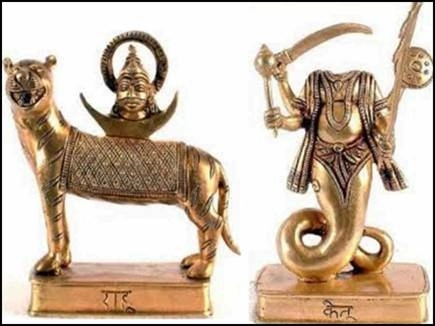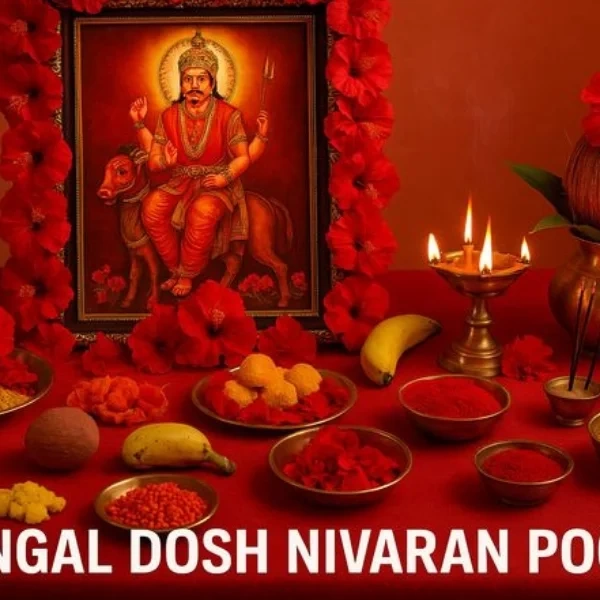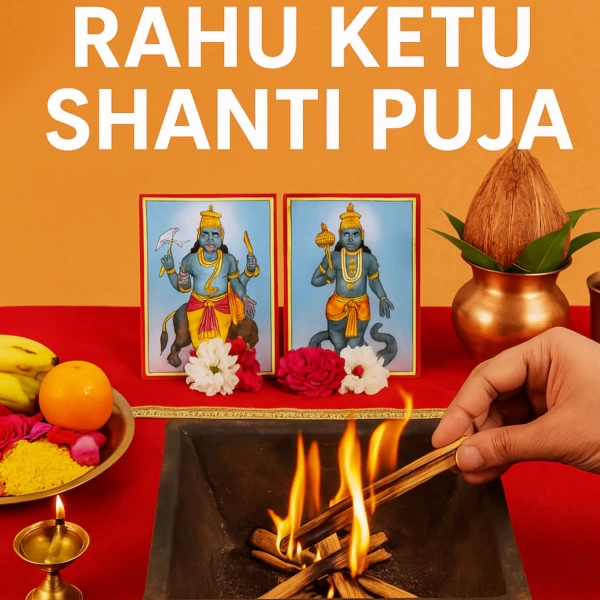Rahu and Ketu are among the most mysterious celestial forces in Vedic astrology. Known as the Chhaya Grahas or “shadow planets,” they have no physical form like other planets but hold immense influence over human destiny. Their story begins in ancient Hindu mythology and continues to shape astrological practice today.
Also read Rahu Ketu Shanti Puja – Complete Guide
Also read Astrological Effects of Rahu & Ketu in Different Houses
Also read Who Should Perform Rahu Ketu Shanti Puja? Signs You Need It
Also read Mythology and Significance of Rahu & Ketu in Hindu Astrology
Also read Rahu & Ketu Remedies for Each House
Mythological Origins – The Story of Samudra Manthan
The tale of Rahu and Ketu originates from the Samudra Manthan (churning of the ocean) described in Hindu scriptures:
- The gods (Devas) and demons (Asuras) churned the ocean to obtain Amrit (nectar of immortality).
- The asura Svarbhanu disguised himself as a god and drank the nectar.
- Lord Vishnu, in the form of Mohini, cut off his head with the Sudarshan Chakra.
- The head became Rahu, and the headless body became Ketu.
- Both were granted planetary status by Lord Brahma and became part of the Navagrahas (nine planets).
Their serpent-like depiction—Rahu as the head and Ketu as the tail—symbolizes their eternal chase of the Sun and Moon, causing eclipses when they “swallow” them.
Also read Who Should Perform Rahu Ketu Shanti Puja? Signs You Need It
Astrological Significance of Rahu & Ketu
Nature and Influence
- Rahu – Associated with desire, ambition, illusion (Maya), foreign connections, sudden gains or losses, materialism, and unconventional paths.
- Ketu – Represents detachment, spirituality, past-life karma, sudden endings, wisdom, and mystical experiences.
Karmic Role
Rahu and Ketu form an axis in the birth chart, representing karmic lessons from past lives and the soul’s direction in this life:
- Rahu pushes towards new experiences and worldly desires.
- Ketu pulls towards spiritual liberation and detachment.
Why They Are Feared and Respected
Unlike visible planets, Rahu and Ketu are lunar nodes—points where the Moon’s path intersects the ecliptic. In astrology, they are considered malefic when afflicted, but can grant exceptional results when well-placed.
- Adverse Influence – Causes obstacles, delays, health issues, relationship troubles, and mental unrest.
- Positive Influence – Brings sudden windfalls, deep spiritual insight, success in foreign lands, and mastery over unconventional fields.
Role in Doshas and Remedies
- Kaal Sarp Dosha – Formed when all planets lie between Rahu and Ketu, leading to prolonged struggles.
- Naga Dosha – Linked to ancestral curses and fertility issues.
- Graha Shanti – Performing Rahu Ketu Shanti Puja is believed to pacify their negative influence and enhance their beneficial effects.
Also read about Top Temples for Rahu-Ketu Shanti Puja
Symbolism in Hindu Belief
- Rahu – The unfulfilled head, always hungry for material achievements.
- Ketu – The headless body, symbolizing detachment from worldly desires. Together, they remind us of the balance between material pursuits and spiritual growth.
Conclusion
In Hindu astrology, Rahu and Ketu are not merely planetary points—they are karmic forces guiding life’s challenges and transformations. Understanding their mythology and astrological role helps in finding harmony between worldly success and spiritual evolution. For those facing persistent obstacles or intense life shifts, astrological guidance and remedies like the Rahu Ketu Shanti Puja can be powerful tools for balance.
Chant for Harmony:
Om Rahave Namah | Om Ketave Namah



3 Comments